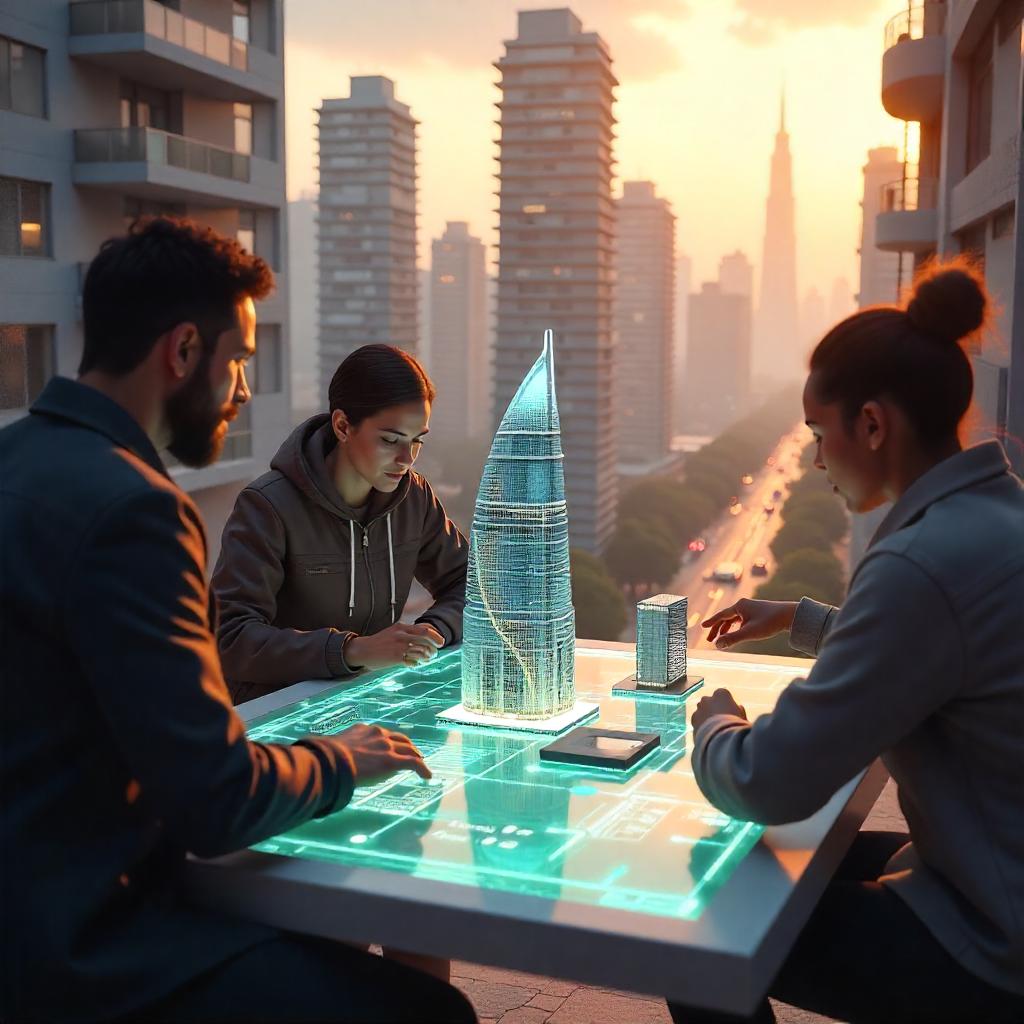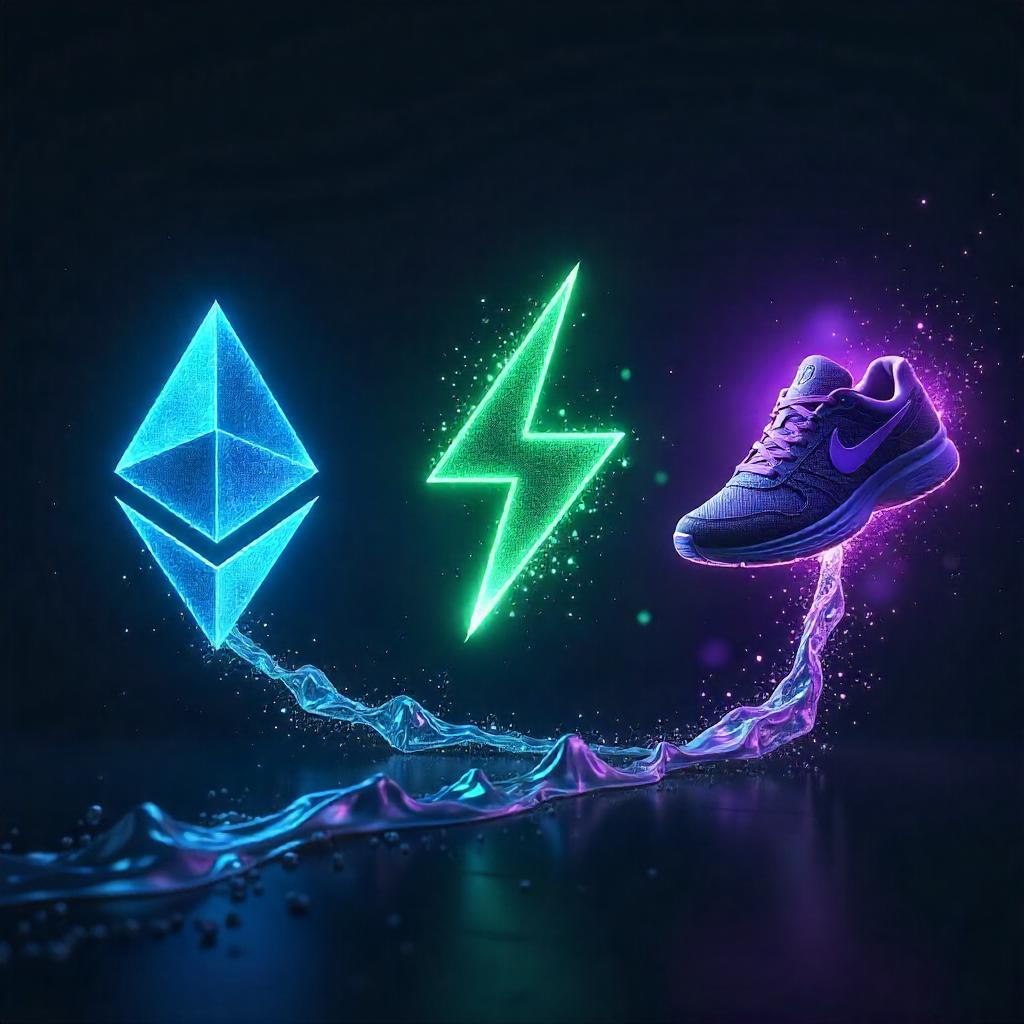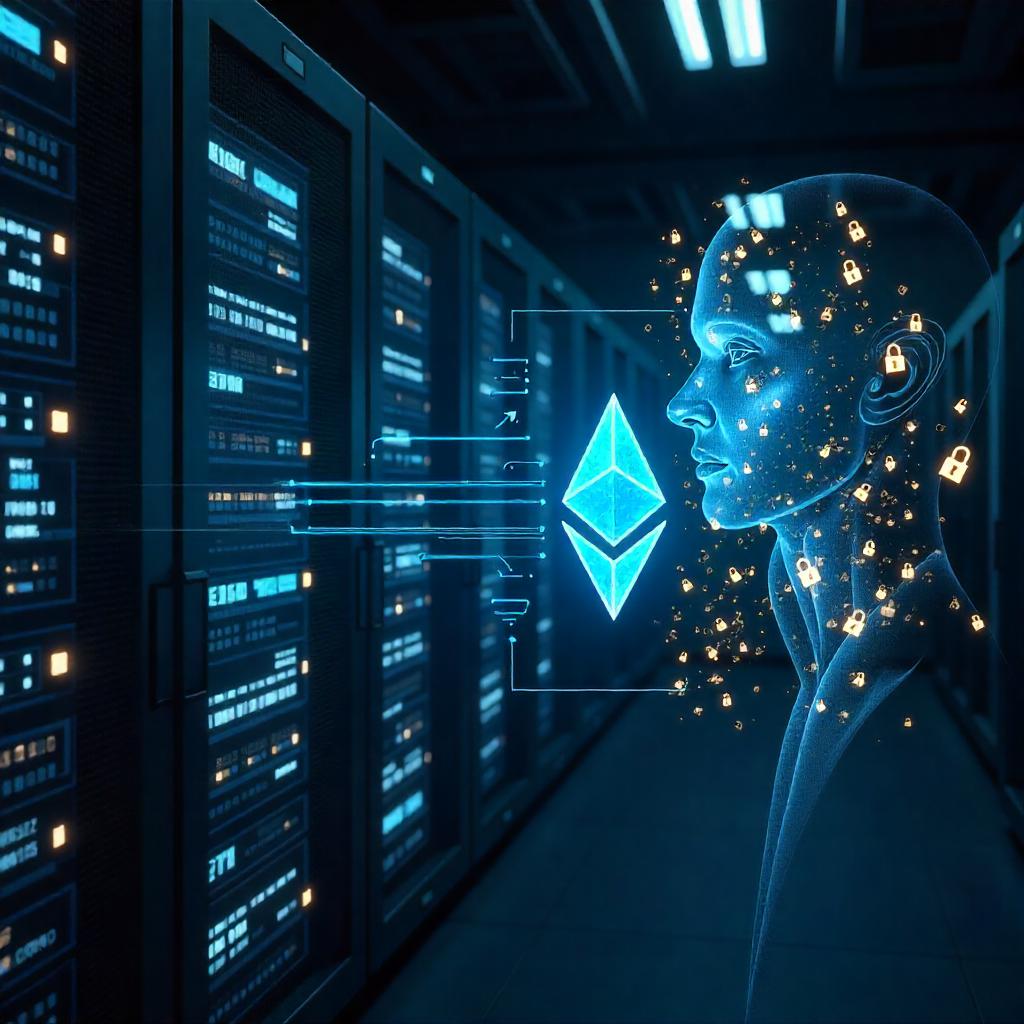The Convergence of Design and Decentralization
The NFT gaming scene is evolving beyond speculative pixel art. It’s embracing tangible utility and creative depth. Enter BAD Neighborhood (Blockchain Architectural Design Neighborhood). This project represents a seismic shift in P2E NFT Gaming Innovation. Launching Q1 2025 on Avalanche, it transforms gamers into architect-tycoons. Players build and govern a digitally sovereign metropolis.
Forget repetitive combat grinds. BAD Neighborhood rewards spatial intelligence and sustainable design. It blends real-world architectural principles with blockchain ownership. Every structure functions as an interactive NFT. Every land parcel holds tangible economic power.
This isn’t just play-to-earn. It’s design-to-earn. Players use CAD-like tools to solve urban challenges. They optimize traffic flow, energy efficiency, and community needs. Successful designs yield $BLUEPRINT tokens and governance rights.
The project directly addresses flaws in early P2E models. It replaces inflation-prone rewards with skill-based tokenomics. Architectural integrity directly impacts earning potential. Poor engineering risks structural failure. Smart design boosts passive income.
BAD Neighborhood positions itself at the forefront of meaningful virtual economies. It turns gamers into stakeholders of a living, evolving city. This is P2E reimagined through blueprints, not battlefields. True P2E NFT Gaming Innovation thrives where creativity meets concrete value.
Project Overview: Blueprinting a Self-Sustaining Metaverse
BAD Neighborhood redefines digital ownership. Players don’t just collect NFTs—they become architects and city planners. Every asset serves a functional purpose within a dynamic, player-driven economy. This is P2E NFT Gaming Innovation grounded in utility, not speculation.
Core Mechanics: Building Blocks of Value
The game revolves around three key NFT classes, each with distinct economic roles:
Land Parcels (Limited Supply: 100,000 at launch)
Geographically unique plots on a persistent world map. Zoning rights (Residential/Commercial/Industrial) dictate buildable structures. Rarity factors: Proximity to resources, terrain type, scenic views. Generate passive rental income if leased to other players.
Structural Kits (Craftable NFTs)
Modular building components: Foundations, frames, facades, utilities. Minted using $BLUEPRINT tokens + in-game resources. Possess stats: Durability, Energy Efficiency, Aesthetic Appeal. Higher-quality kits boost tenant satisfaction and revenue.
Utility Relics (Infrastructure NFTs)
Power grids, water systems, transit hubs, parks. Directly impact district-wide efficiency scores. Require collaborative placement and maintenance. Generate fees from players using the infrastructure.
Engaging Gameplay Loops: Earn Through Design & Strategy
BAD Neighborhood offers multiple pathways to earn, moving beyond simple grinding:
Designer Mode (Solo Play):
Use intuitive CAD-like tools to create structures on owned land. Submit designs for simulation testing (wind load, traffic flow, seismic stress). Earn $BLUEPRINT tokens based on design efficiency and tenant appeal. Top-rated designs get featured in the global gallery or commissioned.
Metropolis Mode (Multiplayer):
Collaborate or compete with neighboring landowners. Trade resources, share infrastructure costs, attract virtual citizens. District-wide efficiency metrics unlock collective $BLUEPRINT bonuses. Poorly planned districts face penalties (traffic jams, pollution).
Commission Hub (Real-World Bridge):
Architecture firms sponsor design challenges with crypto prizes. Solve real-world inspired problems (e.g., sustainable housing). Winning designs may receive real-world recognition or licensing deals.
| Phase | Key Player Actions | Primary Rewards | Skill Emphasis |
|---|---|---|---|
| Construction | Zone land, select materials, design | $BLUEPRINT tokens, NFT durability | Spatial planning, Aesthetics |
| Simulation | Stress-test designs, optimize flaws | Token bonuses, Durability upgrades | Engineering, Problem-solving |
| Governance | Vote on policies, stake NFTs | $GOV tokens, Fee discounts | Strategy, Economics |
This structure ensures earnings reflect creative skill and strategic foresight, not just time invested. It embodies P2E NFT Gaming Innovation by making utility and collaboration the core drivers of value. Forget buying random JPEGs; here, your NFT’s function determines its worth.
Architectural Integration: Where Real-World Engineering Powers P2E NFT Gaming Innovation
BAD Neighborhood doesn’t just look architectural – it functions like a true urban ecosystem. This is P2E NFT Gaming Innovation built on genuine engineering principles, transforming abstract NFTs into dynamic, physics-driven assets.
The Physics Engine: Your Designs Face Real Consequences
Forget decorative buildings. Every structure must withstand simulated forces:
Material Properties Matter: Steel frames handle tension better than concrete. Glass facades shatter under high wind loads. Load Calculations are Crucial: Over-engineer? Waste resources. Under-design? Risk catastrophic collapse during earthquakes or storms. Environmental Interaction: Wind tunnels test skyscraper stability. Terrain affects foundation integrity. Functional Failures: Poor traffic flow causes congestion penalties. Inefficient layouts lower tenant happiness.
Failure isn’t just visual. It costs repair tokens and lowers earnings. Success demands real problem-solving.
Sustainability as Core Gameplay: The Eco-Rating System
BAD Neighborhood integrates environmental responsibility directly into its economy:
Eco-Ratings = Higher Yields:
Buildings earn ratings (1-5 Stars) based on energy use, material sourcing, and carbon footprint. Higher ratings boost $BLUEPRINT token generation – mirroring real-world LEED/ BREEAM certification value.
Resource Management:
Solar panel NFT roofs reduce energy costs. Rainwater harvesting systems cut water expenses. Green spaces (Parks NFT relics) increase district desirability.
Pollution Penalties: Industrial zones lower nearby property values without proper mitigation tech.
This makes sustainability profitable, not just cosmetic.
Bridging Digital & Physical: Real-World Architectural Partnerships
BAD Neighborhood collaborates with leading architecture firms, grounding its P2E NFT Gaming Innovation in professional practice:
Zaha Hadid Architects NFTs:
Licensed, limited-edition NFTs of iconic structures (e.g., Heydar Aliyev Center). Offer unique stat bonuses (e.g., +15% Aesthetic Appeal, +10% Tourist Income).
Professional Design Challenges:
Real firms sponsor in-game contests with specific briefs (e.g., “Net-Zero Community Hub”). Winning designs showcased in partner portfolios, creating career exposure.
Educational Modules:
Tutorials explain core principles like passive cooling or seismic bracing. Learning translates directly to in-game efficiency and earning power.
| Real-World Principle | In-Game Mechanic | Player Impact |
|---|---|---|
| Structural Integrity | Physics-based stress simulation | Avoid costly rebuilds; maximize durability rewards |
| Sustainable Design | Eco-Rating & Resource Consumption | Higher token yields; lower operating costs |
| Aesthetic Value | Tenant/Citizen attraction metrics | Increased rental income & land value |
| Zoning Regulations | District governance votes | Shape economic rules; earn $GOV tokens |
This isn’t fantasy urbanism. It’s a gamified sandbox where real architectural intelligence drives tangible blockchain rewards. Your NFT’s form and function determine its value – a true evolution in P2E NFT Gaming Innovation.
Tokenomics: A Dual-Token Engine Fueling Sustainable P2E NFT Gaming Innovation
BAD Neighborhood learned from early P2E failures. Its economy avoids hyperinflation through a purpose-built dual-token system. This is P2E NFT Gaming Innovation designed for longevity, where skill dictates earnings, not mere participation.
$BLUEPRINT: The Lifeblood of Creation
Utility: Mint structural kits, repair buildings, upgrade land parcels.
Earning Mechanics:
Design Completion: Submit structurally sound buildings (Base reward). Eco-Rating Bonus: Higher sustainability scores boost yields up to 50%. Tenant Happiness: Well-designed spaces attract more virtual citizens = more $BLUEPRINT.
Supply Control:
Hard Cap: 1 Billion tokens. Deflation: 5% burned on every marketplace transaction. Sinks: Building decay requires repairs (token expenditure). Kit minting consumes tokens.
$GOV: Powering Player Sovereignty
Utility: District governance voting, acquiring premium land/Relics, staking rewards.
Earning Mechanics:
Winning Design Contests: Top placements in sponsored challenges. Staking High-Value NFTs: Lock rare Land/Utility Relics for APY. District Leadership Roles: Elected mayors earn salaries in $GOV.
Supply Control:
Hard Cap: 100 Million tokens. Controlled Emission: Released solely via gameplay/DAO milestones (no inflation). Lockups: Staked $GOV required for key governance proposals.
| Token | Primary Use Cases | Key Earning Actions | Anti-Inflation Mechanism |
|---|---|---|---|
| $BLUEPRINT | Building, Repairs, Upgrades | Design Submissions, Eco-Ratings | 5% Transaction Burn, Hard Cap |
| $GOV | Governance, Premium Assets | Tournaments, NFT Staking, Leadership | Fixed Supply, DAO-Controlled Emission |
Why This Model Works: Solving the “Grind & Dump” Problem
Value Anchored to Utility: Tokens derive worth from essential in-game actions (building, governing). Skill > Time: Top designers earn vastly more $BLUEPRINT than grinders. Built-in Scarcity: Burns and hard caps prevent runaway supply. Power to Contributors: $GOV rewards meaningful ecosystem participation, not passive holding.
This isn’t speculative tokenomics. It’s a closed-loop economy where player effort creates tangible, sustainable value – a cornerstone of genuine P2E NFT Gaming Innovation.
Development & Team: Industry Titans Engineering P2E NFT Gaming Innovation
BAD Neighborhood isn’t vaporware. It’s built by proven veterans merging gaming excellence with blockchain rigor. This team ensures its P2E NFT Gaming Innovation delivers both playability and economic stability.
Core Leadership: Gaming Meets Blockchain Mastery
Clara Wu (CEO, Morphosis Labs)
Ex-lead designer of SimCity (2013). Knows city-building mechanics intimately. Founded Morphosis Labs to merge urban simulation with web3 economics.
Raj Patel (CTO)
Former senior engineer at Unity. Built tools for Cities: Skylines. Architected BAD’s physics engine for realistic structural stress.
Elena Voronina (Tokenomics Lead)
Designed DeFi protocols for Aave. Solved token sink challenges here.
Advisory Powerhouse: Bridging Disciplines
Dr. Kenzo Tanaka (MIT Urban Planning)
Ensures zoning rules and traffic algorithms mirror real urban science. Developed the Eco-Rating system’s environmental impact metrics.
Jin Lee (Ex-Star Atlas Economist)
Crafted the anti-inflation mechanisms for $BLUEPRINT/$GOV. Prevented “token dump” vulnerabilities plaguing earlier P2E models.
Avaeriel Kazimir (Polygon Labs DeFi Architect)
Optimized gasless transactions via Avalanche subnet integration.
Tech Stack: Cutting-Edge Performance
Unreal Engine 5 Nanite Rendering:
Renders complex structures at cinematic quality. No detail loss at scale. Dynamic lighting shows real-time energy use via building NFT glow.
Avalanche Subnet:
Processes 4,500 TPS with sub-second finality. Enables gasless trades for common actions (repairs, resource swaps).
Chainlink Oracles:
Pulls real-world weather/energy cost data into simulations. Ensures design challenges reflect live environmental factors.
Ethical Development Principles
No Pay-to-Win:
Rare NFTs offer efficiency boosts, not auto-win buttons. Skill always dominates.
Open-Source SDK (2026):
Will let players create custom building components.
Treasury Transparency:
30% of NFT sale revenue funds community prize pools.
This team isn’t chasing hype. They’re engineering a sustainable ecosystem where architectural creativity powers true ownership. Their pedigree makes BAD Neighborhood’s P2E NFT Gaming Innovation credible – and revolutionary.
“We’re not gamifying finance. We’re financializing gameplay through authentic design.”
– Clara Wu, Morphosis Labs Founder
Roadmap: Strategic Rollout for Sustainable P2E NFT Gaming Innovation
BAD Neighborhood’s development follows a phased, player-focused approach. Each milestone prioritizes ecosystem health over hype. This roadmap embodies true P2E NFT Gaming Innovation through measured, utility-driven growth.
Phase 1: Foundation & Access (Q3-Q4 2025)
Land Parcel Presale (20,000 Genesis Plots):
Rarity based on real-world geography: Coastal plots offer tourism bonuses, mountainous terrain enables renewable energy perks. Founding Citizen NFTs grant early governance rights and beta access.
Closed Beta Launch:
Stress-test core mechanics with 5,000 players. Iterate based on community feedback on physics accuracy.
Sustainability League Inauguration:
Sponsored tournaments with $250k prize pools from eco-conscious brands (e.g., Tesla, Patagonia). Real architects judge entries based on efficiency and innovation.
Phase 2: Ecosystem Scaling (2026)
Metropolis Mode Expansion:
District alliances unlock shared infrastructure rewards. Cross-parcel transit systems (e.g., player-built subways) go live.
Sandbox Interoperability:
Import/export NFT assets between platforms (e.g., BAD structural kits become Sandbox decorations). Dual staking rewards for cross-platform NFTs.
Mobile Command Hub App:
Monitor city metrics, vote on governance, and trade resources on iOS/Android. AR mode visualizes designs in real-world spaces.
Phase 3: Real-World Integration (2027+)
| Milestone | Player Opportunity | Industry Impact |
|---|---|---|
| Professional Crowdsourcing Platform | License designs to real firms for royalties | Architects source talent from top players |
| Carbon Credit Marketplace | Sell verified eco-ratings as carbon offsets | Corporations offset emissions via player creations |
| University Partnerships | Accredited courses using BAD’s simulation tools | Students earn crypto while learning urban design |
Anti-Speculation Safeguards
Land Release Caps: Only 15% new parcels annually to prevent market flooding. Tournament Gating: Entry requires proven design skill, not NFT ownership alone. Real-World Utility First: Physical partnerships established before token listings.
This roadmap avoids the “launch and abandon” trap. Every phase reinforces the core vision: A player-owned metropolis where architectural ingenuity drives earnings. BAD Neighborhood’s P2E NFT Gaming Innovation lies not in speed, but in sustainable value creation.
“We build one resilient district at a time – not a house of cards.”
– Morphosis Labs Development Manifesto
Building the Future of Value-Driven P2E NFT Gaming Innovation
BAD Neighborhood isn’t just another crypto game. It’s a paradigm shift. By fusing authentic architectural design with rigorous tokenomics, it solves the core flaws of early play-to-earn models. This project proves that P2E NFT Gaming Innovation thrives when virtual productivity mirrors real-world skill.
Why This Model Succeeds Where Others Failed
Value Creation > Extraction:
Earnings stem from designing functional, sustainable solutions – not mindless clicking. Your NFT’s utility dictates its worth.
Skill-Based Rewards:
Top architects earn significantly more. Engineering prowess directly boosts $BLUEPRINT yields and $GOV access.
Built for Longevity:
Deflationary burns, hard caps, and real-world utility (licensing, carbon credits) anchor the economy.
Meaningful Ownership:
Players don’t just own assets; they govern districts, shape policy, and build lasting digital legacies.
The Bigger Picture: Beyond Gaming
BAD Neighborhood pioneers a new standard. It demonstrates how blockchain can incentivize creativity, sustainability, and collaboration at scale. This isn’t gambling disguised as gameplay. It’s a platform where spatial intelligence and strategic planning unlock tangible rewards. Gamers become urban designers. Digital architects influence real-world practices.
The era of exploitative grinding is over. True P2E NFT Gaming Innovation starts when mechanics demand ingenuity, economies reward contribution, and ownership empowers creation. BAD Neighborhood delivers exactly that. It’s more than a game—it’s a blueprint for web3’s creative, player-owned future.
Ready to build your legacy? The metropolis awaits its architects.





